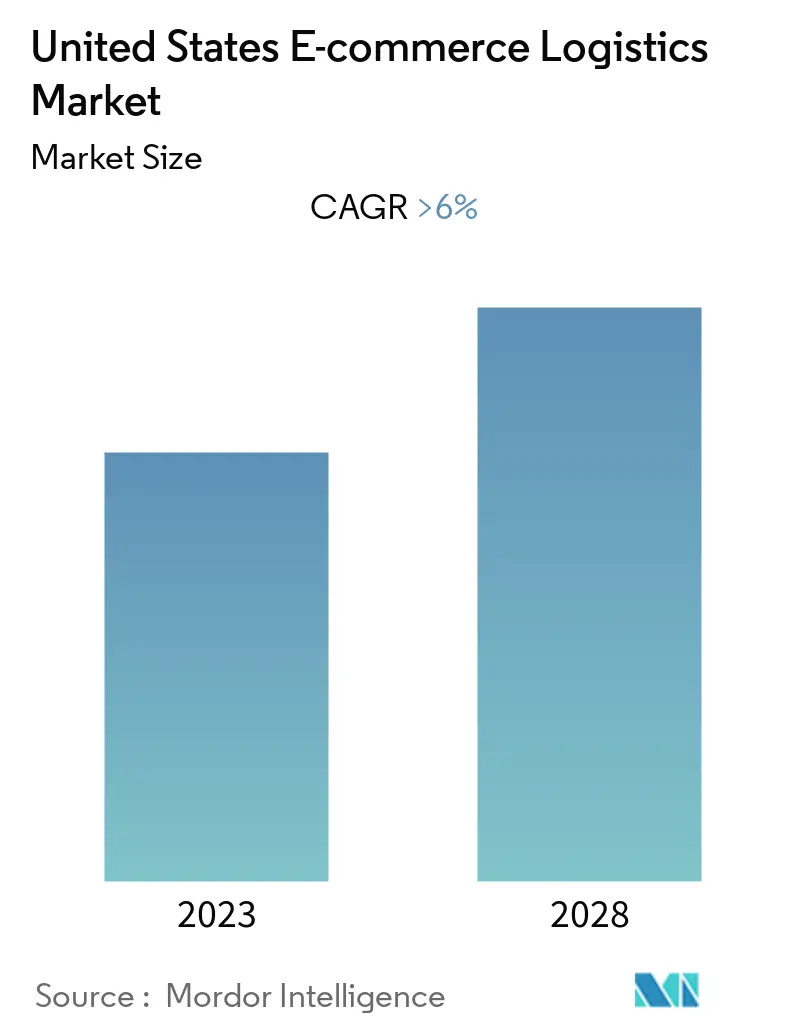Market Size of United States E-commerce Logistics Industry

| Study Period | 2019 - 2028 |
| Base Year For Estimation | 2021 |
| Forecast Data Period | 2024 - 2028 |
| Historical Data Period | 2019 - 2020 |
| CAGR | > 6.00 % |
| Market Concentration | Low |
Major Players.webp)
*Disclaimer: Major Players sorted in no particular order |
Need a report that reflects how COVID-19 has impacted this market and its growth?
US E-Commerce Logistics Market Analysis
US e-commerce logistics market is estimated to grow significantly at a CAGR of more than 6% during the forecast period.
Before COVID-19, e-commerce was already on the rise. According to a recent examination of statistics from the US Department of Commerce, whereas brick-and-mortar retail hasn't gained more than 4% since 2005, US online sales have grown at a steady annual rate of between 13% and 18% over the last decade. B2C e-commerce sales grew in 2020 due to an increase in online shopping activity during the COVID-19 outbreak in the United States.
The US holds a major share in the North American e-commerce logistics market owing to the advancement in logistics technologies attributed to the introduction of automation, robotics, wearable technology, drone technology, self-driving vehicles, cloud computing, and IoT in logistics technology.
United States is the world's largest economy with a GDP of more than USD 20 trillion and with a population and consumer base of more than 315 million. But despite the seemingly unquenchable demand, the same-day delivery market has its fair share or hurdles to overcome. For one, there’s a a driver shortage going on – last-mile firms are calling it their main concern, and many companies trying to get into same-day services are having to offer greater pay and benefits to their drivers to incentivize them to stay.
Smaller same-day providers are also constrained by a lack of automation technology and fulfillment locations. One of the challenges for same-day delivery is routing and dispatching for on-demand orders – without automation technology that can manage an entire fleet in real-time, it can be difficult to plan out the logistics of each delivery.
